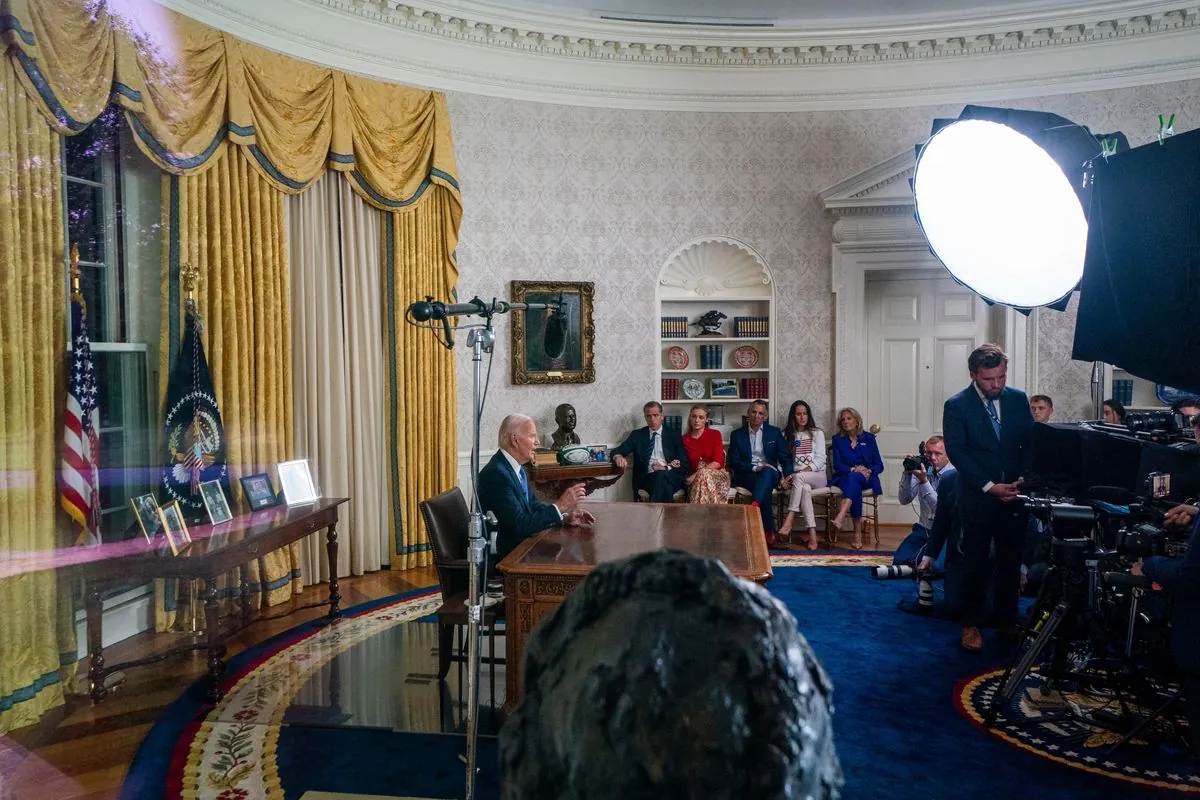In a significant shift in U.S. nuclear policy, President Joe Biden has approved a highly classified strategic plan that refocuses Washington's deterrence efforts on China's expanding nuclear capabilities. This revision, known as the "Nuclear Employment Guidance," was sanctioned in March 2024 but has not been publicly announced by the White House.
The United States maintains a nuclear triad consisting of land-based intercontinental ballistic missiles, submarine-launched ballistic missiles, and strategic bombers. This new guidance marks a pivotal moment in U.S. strategic thinking, as it's the first time the nation's nuclear deterrent strategy has been reoriented specifically towards China's growing arsenal.
While China's nuclear stockpile is considerably smaller than that of the U.S. or Russia, it has been expanding rapidly in recent years. This expansion, coupled with China's development of hypersonic weapons and new nuclear silos, has raised concerns in Washington.
The concept of "tailored deterrence" has gained prominence in U.S. strategic thinking, addressing specific threats from different adversaries. This new guidance appears to be an application of this concept, tailoring the U.S. nuclear posture to the unique challenges posed by China's military modernization.
It's worth noting that China is not party to any nuclear arms control treaties with the U.S., unlike Russia, with whom the U.S. has the New START Treaty limiting deployed nuclear warheads. This lack of formal arms control agreements with China adds complexity to the strategic landscape.
The U.S. Department of Defense has identified China as its "pacing challenge" in recent years, and this nuclear guidance revision seems to align with that assessment. However, the U.S. continues to maintain its "second-strike capability" as part of its overall nuclear deterrence strategy, ensuring the ability to retaliate even after absorbing a nuclear attack.
While the White House has not made a public announcement, two senior administration officials have been permitted to allude to this strategic revision in recent speeches. An unclassified notification to Congress about the updated guidance is expected before President Biden leaves office, likely before January 20, 2025, assuming he doesn't secure a second term.
This revision is part of a regular process, with the nuclear strategy typically updated every four years. It forms a crucial component of the broader National Security Strategy and involves input from various government agencies, including the Department of Defense and Department of Energy.
As the U.S. continues to modernize its nuclear arsenal, including the development of new ICBMs and nuclear-capable stealth bombers, this new guidance will likely shape the direction of these efforts. The focus on China reflects the evolving global security landscape and the need for the U.S. to adapt its deterrence strategies accordingly.
"Our nuclear deterrent remains the ultimate guarantor of U.S. and allied security. We continuously assess and update our strategies to ensure their effectiveness in an ever-changing global environment."
This shift in nuclear strategy underscores the complex challenges facing U.S. policymakers as they navigate the intricate balance of global nuclear deterrence in the 21st century.
